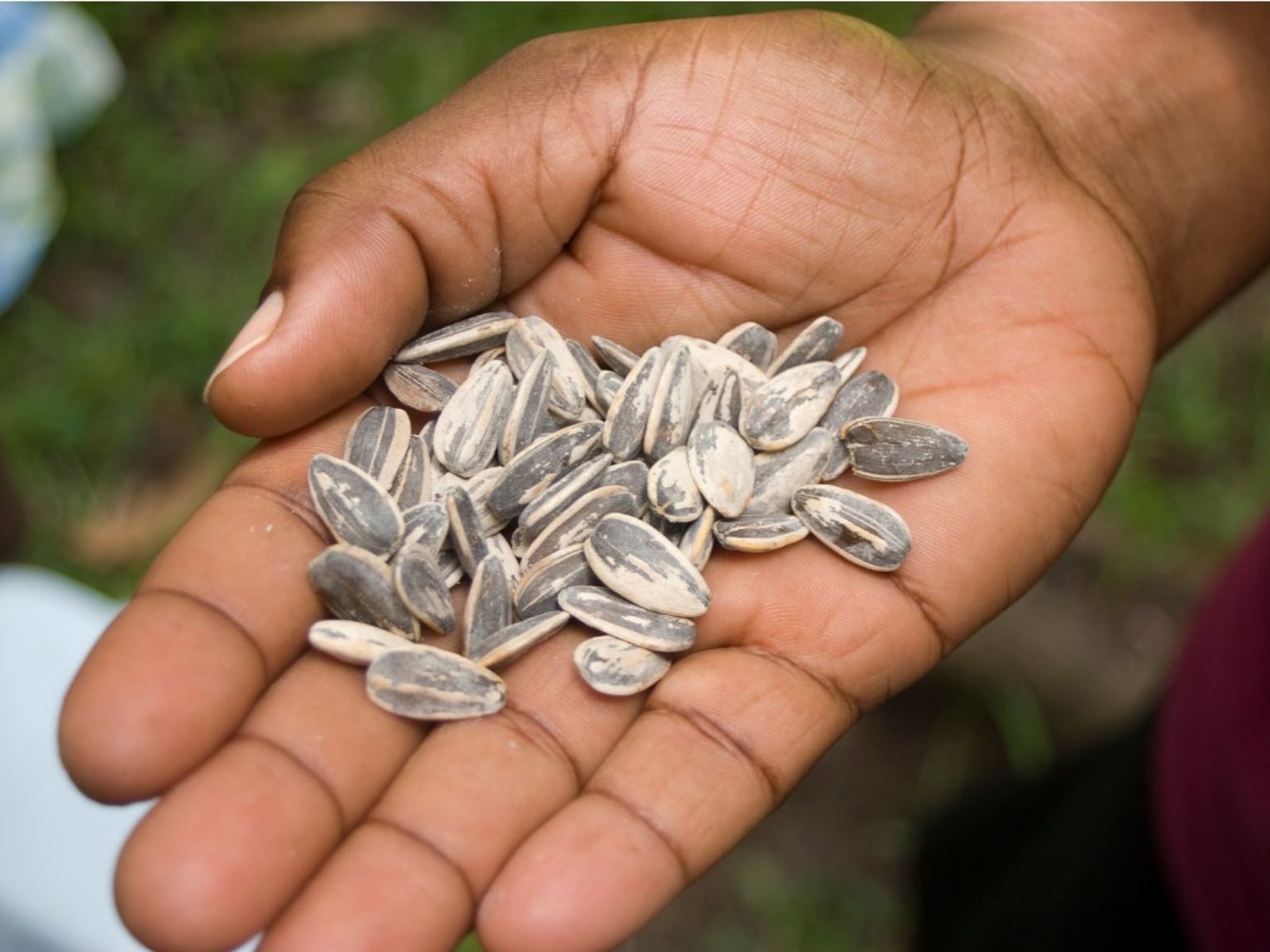When winter comes around, I don’t know what I would do. But seed sowing gives me something to look forward to! The dark, gloomy days of winter make me dream of warmer weather, and seed sowing is the first step toward making those dreams come true.
This post is going to throw a lot at you. I apologize in advance. It can get pretty complicated to start seeds, even more so than what I’m going to talk about in this post. To keep things simple and avoid making you blank, I’m going to try to stick to the basics. I always tell people to work within their means and set up and to take notes (which I will say again and again!). Just know that the flowers want to grow, so we have that in our favor!.
Starting flowers from seeds is one of the most rewarding parts of gardening. Watching a tiny seed grow into a vibrant blooming plant is magical. With the right techniques starting flower seeds can be easy and successful even for beginners. In this comprehensive guide, we’ll explore the key steps and best practices for starting flower seeds indoors and outdoors.
Why Start Flowers from Seed?
Growing flowers from seeds has many benefits compared to buying transplants
- Cost savings – Flower seeds are very affordable, often just a few dollars for hundreds of seeds. Transplants can be pricier on a per-plant basis.
- Wider selection – You can find unique, heirloom varieties by starting from seed that may not be available at nurseries.
- Custom scheduling – You control the timing and can stagger plantings for continuous blooms.
- Stronger plants – Plants started from seed are more robust with healthier root systems than transplants.
- Educational – Observing the seed starting process is fun and educational, especially for kids.
When to Start Flower Seeds
Most flower seeds are started indoors 6-8 weeks before the last expected frost. This gives enough time for germination and sufficient growth before transplanting outdoors.
However, some flowering plants can be direct sown earlier in spring once soils reach 40°F. Hardy annuals like larkspur and calendula can be direct sown a few weeks before the last frost.
Check the back of the seed packet for specifics on when to start indoors vs direct sowing.
Selecting the Right Flower Seeds
When starting for the first time, it’s best to begin with easy, fast-growing annual flowers:
- Cosmos
- Marigolds
- Zinnias
- Sunflowers
- Petunia
- Morning Glory
Many popular perennials like lavender, echinacea, and snapdragons also grow well from seed.
Important: Check if the flower variety is best started from seed, cuttings, or transplants. Some hybrids or tender perennials don’t grow true from seed.
Step 1: Choose Containers for Starting Seeds
You can use a variety of household items as mini greenhouses to start seeds:
- Plastic containers or trays
- Cell packs or egg cartons
- Yogurt cups
- Compostable peat pots
- Reusable plastic pots
Make sure containers have drainage holes and are 2-3 inches deep for adequate root growth. Trays with individual cells prevent overcrowding of seedlings.
Soil blocks are another excellent option providing optimal conditions for germination.
Step 2: Use a Quality Seed Starting Mix
Seed starting mix provides the light, fluffy texture seeds need to sprout:
- Use a sterile, soilless mix to prevent disease
- Look for mixes with peat moss or coconut coir
- Ensure adequate perlite or vermiculite for drainage
- Avoid dense garden soil which restricts growth
You can make your own by mixing coco coir, vermiculite, and perlite. Commercial seed starter mixes are convenient and premixed.
Step 3: Sow Seeds and Provide Moisture
Read the seed packet for depth and spacing. As a rule of thumb, plant seeds 2-3 times as deep as their width. Gently cover with soil or vermiculite.
Use a mister or spray bottle to water soil until moist. Don’t saturate or allow soil to become soggy.
For small seeds, bottom-watering helps avoid displacing them. Just set the container in water until the surface is damp.
Step 4: Provide Warmth for Germination
Create a warm environment between 70-80°F for optimal germination:
- On top of a fridge or appliance
- Next to heating vents
- Use heating mats or grow lights
- A sunny window over a radiator
Remove any plastic domes or covers once sprouts appear to prevent mold.
Step 5: Ensure Proper Lighting
Once they’ve sprouted, seedlings need 8-12 hours under lights or sunlight:
- South-facing windowsills often provide enough light
- LED grow lights are affordable and consume little energy
- Position lights 2-4 inches above seedlings
- Adjust height as plants grow to prevent stretching
Rotate plants or use reflective material to ensure even coverage.
Step 6: Transplant Outdoors After Hardening Off
Gradually expose seedlings to outdoor conditions over 7-10 days:
- Place outside in shade for a few hours, increasing time each day
- Bring indoors or cover overnight
- Reduce watering slightly to slow growth
- Transplant on a cloudy day or in evening
- Water well and consider using row cover for protection
Key Tips for Success When Starting Seeds
Follow these best practices for optimal germination and vigorous seedlings:
- Use sterile tools and containers to prevent disease
- Allow soil to dry slightly between watering to prevent mold
- Thin overcrowded seedlings and transplant extras
- Gently brush tops of seedlings daily to stimulate growth
- Keep seedlings near growing area to simplify transplanting
With the right process, you can grow flower seeds into thriving beds, borders, and containers for pennies on the dollar compared to buying plants. Starting your own flowers from seed is one of the most gratifying ways to add beauty to your garden landscape.

When to order seeds and why you should be seed starting
Even though seed catalogs don’t start coming in until December or January, I have to say that the seeds I buy from them are usually bought on a whim. When November comes around, most of the seeds we will plant for the next season have already been planned, ordered, and put away in their boxes. We are planning and ordering our seeds once pumpkin spice lattes are back in action. We might not be able to get some varieties or have them in time to plant them on time if we wait until winter. This is especially true for our hardier crops. As a professional flower grower, you are hurting yourself by waiting that long if you order in the winter. It works for hobbyists and some crops. Most of your seed orders should be placed in late summer or early fall. You should refine your plans and buy varieties to fill in gaps or try in the winter, but most of your orders should be placed before then. For this part, you’ll need to get fancy with spreadsheets, but that’s a different story for another day.
Seed starting can seem intimidating but truly, it is one of the most rewarding processes. When you’re in the flower farming business, growing your own plants from seeds is usually the best and most cost-effective way to go. There are some types that might be better ordered as plugs, like lisianthus, because they take so long to grow or need too much special care, taking up valuable space in the propagation house. Some plants, though, won’t grow true from seeds or will make sterile seeds, so cuttings, tubers, or corms are the best ways to start them. But in general, if you want to work on a flower farm, you need to know how to start plants from seeds.
I am going to go through the basics to get you started. Overall, you will need to think like a seed. Learning more about each variety’s specific needs will allow you to better start those varieties from seed. When does the seed usually start to grow? (Hint: you might be able to get some help in the field!) Where does the plant normally grow? When does it bloom? What temperature does it do best in? Does this type of plant do better when planted directly or grown from a transplant?
Seed catalogs and envelopes typically have all this great information. At the end of this post, I also list some books that might be helpful for you, since some seed companies (like Geoseed) send seeds without any information on how to grow them. The best habit to get into is to take notes. Notes on when you planted the seeds, where you chose to grow them, the weather, the date of germination, the date of transplanting, the date of blooming, and so on. Begin to build your own data. This will allow you to see errors or success that you can happily repeat thanks to note taking.
How to start seeds indoors with step by step instructions and demonstrations// Northlawn Flower Farm
FAQ
How do you germinate flower seeds quickly?
Should you soak flower seeds before planting?
Can you just sprinkle flower seeds?
Is it better to start flower seeds indoors or outdoors?
How do you start a plant from seed?
Heat mats placed under the seed starting tray are an excellent way to give the seeds a quick start. Prepare the seed starting medium and container. Choose a commercial seed-starting mix and moisten it well.
How do you start seeds indoors?
To start seeds indoors, you’ll need potting mix, containers to plant your seeds in, and a way to keep them moist. You can start flower seeds in paper cups, toilet paper rolls, paper egg cartons, clear plastic bags, tiny pots, peat pots, or seed-starting trays with a clear lid.
How do you grow flowers from seed?
To grow flowers from seed, fill a planter with a mixture of peat moss, vermiculite, and perlite and sprinkle the seeds on top. Water the seeds, cover the planter in plastic, and put it in a warm location indoors. Once the seeds sprout, thin out the seedlings and plant them outdoors after all danger of frost has passed.
When should I start planting flower seeds indoors?
The best time to start planting flower seeds indoors is about four to eight weeks before the projected outdoor transplant date. This depends on how quickly the plant grows. This information, including whether each flower type is cold hardy or tender to frost, will help growers make this determination.
Should you start your own flower seeds?
Starting your own flower seeds indoors and watching the enchanting process of a seed growing into a flower brings hours of pleasure. It’s a cost-effective hobby that will provide color and beauty to fill your flower boxes, patios, and garden for summertime joy! Why not experiment with starting your own flower seeds right at home!
How do you plant seeds in a pot?
If your seeds are larger (like beans or peas) or they require darkness to germinate (check the instructions on the seed packets), cover them with a layer of vermiculite or seed starting mix equal to their height, usually 1/4 inch to 1/2 inch. Step 4: Label your newly planted seeds. Label each pot.
- A Complete Guide to Caring for Yuki Cherry Blossom Shrub - January 23, 2025
- Identifying Red Hot Poker Seeds: What to Look For When Harvesting Torch Lily Pods - January 23, 2025
- A Complete Guide to Harvesting Evening Primrose Seeds - January 23, 2025
